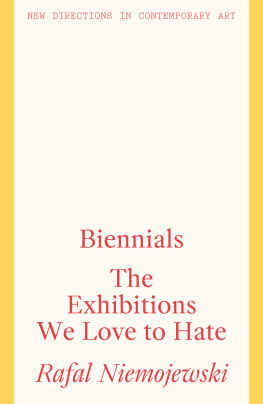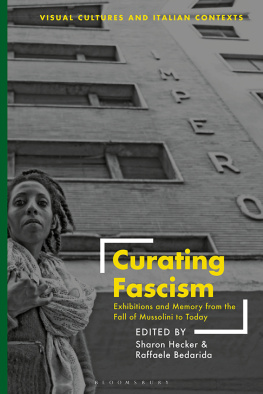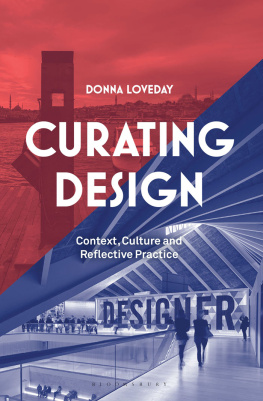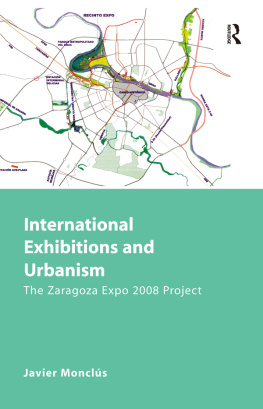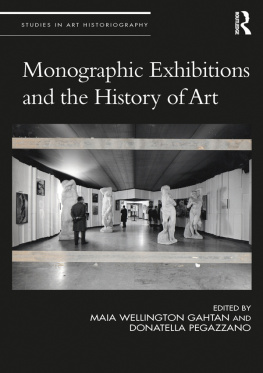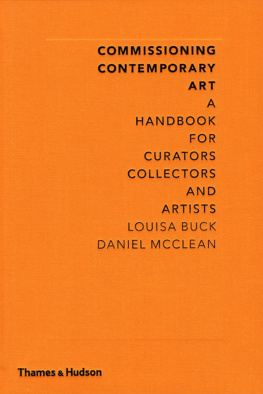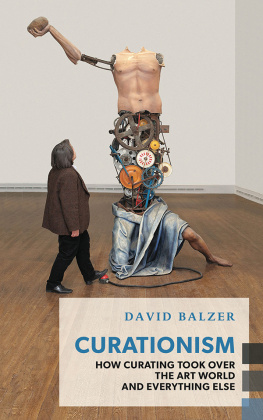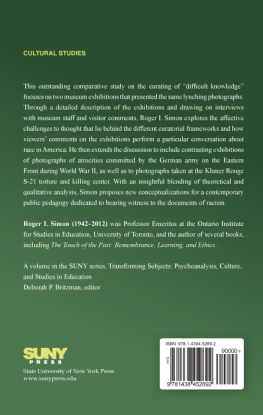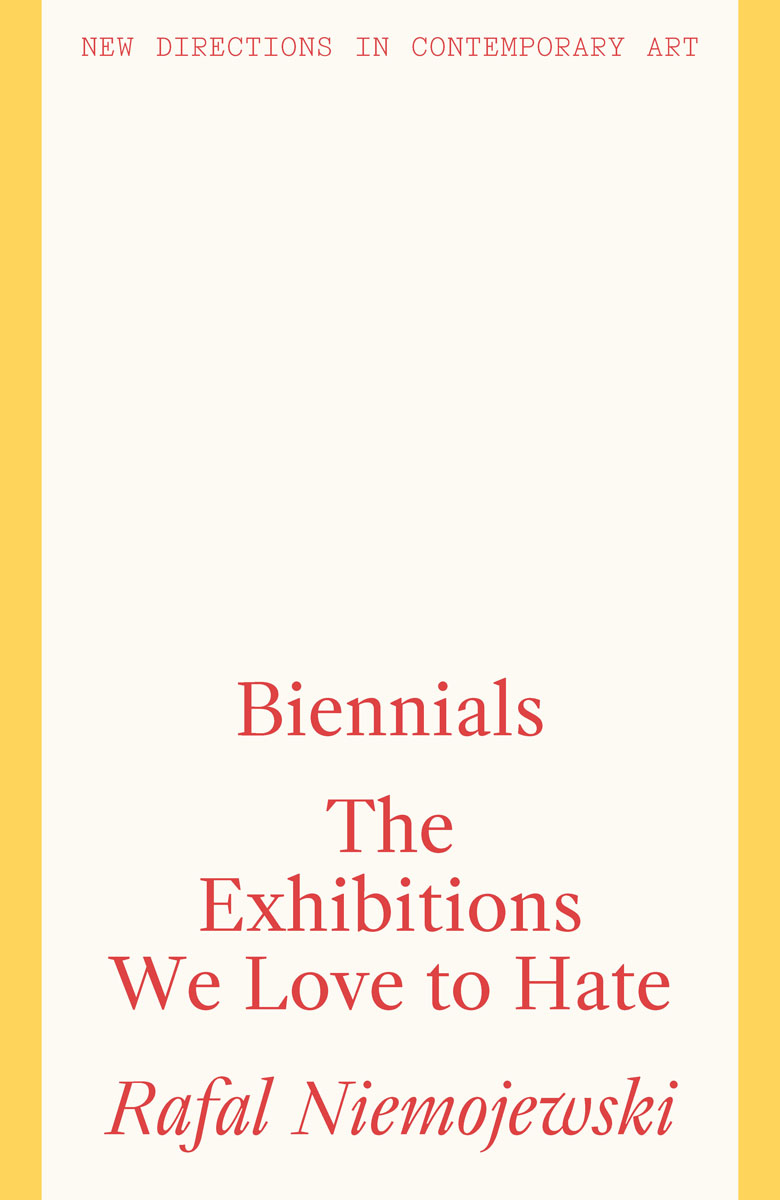

First published in 2021 by Lund Humphries
Lund Humphries
Office 3, Book House
261A City Road
London EC1V 1JX
UK
www.lundhumphries.com
Biennials: The Exhibitions We Love to Hate
Rafal Niemojewski, 2021
All rights reserved
ISBN 978-1-84822-388-2
eBook (Mobi) 978-1-84822-390-5
eBook (ePub) 978-1-84822-392-9
eBook (pdf) 978-1-84822-393-6
A Cataloguing-in-Publication record for this book is available from the British Library
All rights reserved. No part of this publication may be reproduced, stored in a retrieval system or transmitted in any form or by any means, electrical, mechanical or otherwise, without first seeking the permission of the copyright owners and publishers. Every effort has been made to seek permission to reproduce the images in this book. Any omissions are entirely unintentional, and details should be addressed to the publishers.
Rafal Niemojewski has asserted his right under the Copyright, Designs and Patent Act, 1988, to be identified as the Author of this Work.
Copy edited by Michela Parkin
Designed by Wolfe Hall
Set in Mediaan by Dvid Molnr
and WH Aldine Mono by Wolfe Hall
Printed by Tallinna Raamatutrkikoda, Estonia
Image credits: Biennial Foundation/Rafal Niemojewski:
Chapter 1
Biennialization and its counternarratives
Chapter 2
Biennial fatigue: Too many and They all look the same
Chapter 3
Biennials and art-world hegemonies: from resistance to conformity and back again
Chapter 4
Biennials after the social turn: the unfulfilled promises of social betterment and exhibitions by other means
Chapter 5
The fermata
NEW DIRECTIONS IN CONTEMPORARY ART
Series Editor: Marcus Verhagen, Senior Lecturer, Sothebys Institute of Art, London
INTERNATIONAL SERIES ADVISORY BOARD
Amelia Barikin, Lecturer in Art History in the School of Communication and Arts, University of Queensland
T J Demos, Professor in the Department of History of Art and Visual Culture (HAVC) at UC Santa Cruz
Anthony Downey, Professor of Visual Culture in the Middle East and North Africa, Birmingham School of Art
Karen Fiss, Professor of Graphic Design, Visual Studies and Fine Arts, California College of the Arts
Yuko Hasegawa, Chief Curator of the Museum of Contemporary Art, Tokyo (MOT) and Professor of Curatorial and Art Theory at Tama Art University in Tokyo
Katja Kwastek, Professor of Modern and Contemporary Art, Vrije Universiteit Amsterdam
Lisa Le Feuvre, curator, writer, editor and inaugural Executive Director of the Nancy Holt and Robert Smithson Foundation, New Mexico
Nina Mntmann, Professor of Art Theory, Institute of Art & Theory, University of Cologne
Tom Morton, curator, lecturer and writer. Contributing Editor of Frieze magazine
Paul ONeill, curator, artist, writer, educator, Artistic Director of PUBLICS, Helsinki
Simon Sheikh, Reader in Curating, Goldsmiths, University of London
Foreword
For a while now, in the eyes of many, the biennial has been the embodiment of all that is wrong in todays art world. For others, it is the exhibition format most attuned to present circumstances. It has come to stand as the emblematic expression of a newly global art world. Some commentators have seen it as having a homogenizing effect. They have claimed that the same few celebrated artists show their works at one biennial after another, just as the same brands and retailers have colonized shopping zones around the world. Others have maintained that it has allowed peripheral centers to gain a foothold in international art circuits and artists with local reputations to reach an international public. The biennial has also been caught in the crosshairs of another debate, around curating. The proliferation of biennials in the 1990s coincided with the rise of the independent curator and of course many of the most celebrated curators have worked on biennials. Thus the institution has an outsized place in the burgeoning literature on curating.
In these texts, whatever the positions taken up by their authors, the biennial is presented as a stable and consistent exhibition format. The glitz of Venice, the spread of documenta, the history of the Carnegie International: these are projected onto a host of other institutions. Inasmuch as few commentators have the funds or leisure to travel regularly from one to another, this is understandable, but it does the biennial a disservice all the same. Certainly, there are features curatorial concerns, framing devices, organizational models that are common to many biennials, but the institution is not reducible to the profiles of the best known (Euro-American) examples. Given its place in contemporary art world debates, it deserves a more nuanced treatment. That is what it gets here from Rafal Niemojewski, who examines a broad range of biennials (and triennials, quinquennials, etc.), including lesser known but particularly revealing ones, and so paints a picture of an institution that is at once more complex and more intriguing than it appears in more glancing accounts. This book will now serve not just as a clearer guide to what the biennial has been in the past but also hopefully to what it can be as it emerges from a pandemic that will in all likelihood profoundly affect it.
Marcus Verhagen
Chapter 1
Biennialization and its counternarratives
There are few transitions in the contemporary art world over the past three decades that have made a mark comparable to the proliferation of the international iterative exhibitions commonly referred to as biennials.increased visibility given to emergent art hubs and scenes. In putting a new spotlight on the figure of the curator, they have also added new dimensions to their practice, including cultural translation, diplomacy and a growing requirement to be public facing. Last, but not least, large-scale international exhibitions have disrupted the existing art markets value chain, which now relies on biennials as much as it does on major museum acquisitions and exhibitions.
The beginning of this period of growth can be roughly traced to the mid-1980s, concomitant with the appearance of new biennials in territories largely peripheral to, or disconnected from, the core of the contemporary art world, which at that time was still centralized and revolved around the few Western art capitals empowered throughout modernity. The biennials emerging during this period were characterized by a strong desire to challenge the status quo of unequal power relations within the art world and the world at large. The earliest contemporary biennial organizations (Havana, Cairo) emerged in territories then designated as the Third World, which could be translated as both geographically remote and politically and economically incompatible with the Western core. Others (notably Istanbul) materialized in the peripheries and semi-peripheries with an analogous agenda of correcting and decentralizing the cartography the art world inherited from modernity. One thing that these various positions had in common was that they were located on the margins of dominant culture, within the regions of the so-called social, cultural and/or geographical periphery or other.
By the early 1990s, with major shifts occurring in geopolitics following the end of the Cold War, the ever-accelerating pace of the revolution in information processing, transportation (the boom in low-cost aviation) and telecommunication technologies (the Internet, use of satellites), globalization processes took a major leap. The visible division of the world into two blocs had been replaced by a complex network of exchanges, in which American hegemony was relativized by the European Union, the rising power of East Asia and the former USSR among The signing of treaties activating two new major trade agreements in the Americas Mercosul (Southern Common Market including Argentina, Brazil, Paraguay, Venezuela and Uruguay) in 1991 and NAFTA (North American Free Trade Agreement between the United States, Canada and Mexico) in 1994 along with the transformation of the earlier European Economic Community into an economic and political European Union in 1993, introduced economic deregulation and open markets on an unparalleled scale.
Next page
